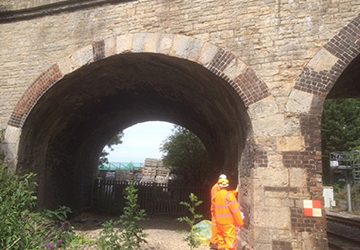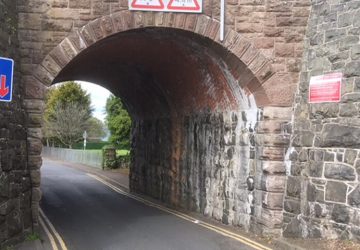Stone Repairs
Service
Services
Contact For Services
Total Specialist Maintenance Ltd (TSM) is a leading specialist contractor Driven to exceed expectation!

Stone Repairs
Total specialist maintenance provide specialist stone and masonry repair services to building facades and structures on a national basis and for various market sectors
Total specialist maintenance carries out all forms of stone repairs which include replacement of stonework, re-casing of stonework and repairs to stonework using restoration mortars using up to date colour matching techniques, application of mineral paint techniques with modern colour matching or alternatively transparent coatings.


Problems that lead to stone repairs
Masonry deterioration is commonly related to structural movement leading to cracking, spalling and subsequent penetration of water leading to freeze-thaw damage
Surface erosion is highly influenced by the nature porosity of the masonry and its location i.e constant wetting/drying will lead to accelerated decay
Repointing
Stonework Re-casing
Stitching and Grouting
Stitching and Grouting
Repairs using restoration mortars (colour matching available)
Application of mineral paints (colour matching available)
Application of transparent coatings
Application of waterproofing coatings
Benefits
Directly Employed Workforce
Highly Skilled and Experienced Operatives
Certified Training
Accreditations





Frequently
Ask Questions
Technical Questions About
Stone Repairs
Frequently asked questions about Total Specialist Maintenance Stone repairs, for domestic, highways construction, rail and infrastructure sectors and technical queries regarding stone repairs
For any additional information that is not listed please contact our technical team
You would have two main options available to you for repairing the damage to the stonework. The higher quality option is to use a repair filler with some suitable stone that matches your walls, while the cheaper option is to use mortar repairs.
One of such ways is by sandstone repair resin or epoxy. These usually come with pigments to match the colour of the stone in question. Mix the pigments with the epoxy and carefully inject the mixture into the crack and leave to harden for 24 hours.
Flaking (also called spalling) in natural stone is generally an indicator of sub-florescence, a condition in which mineral salts are carried into the stone by moisture and accumulate beneath the stone’s surface, creating stress within the pores of the stone.
If the mortar is loose, crumbling, or falls out easily with digging, it is in need of repair or restoration. Visually inspect the walls for a crumbling or flaking of the surface of their brickwork. This form of deterioration, known as spalling, usually results from some source of water damage.
Nisawa SN is a specially designed cross-linking silane product that is intended to naturally stabilize and strengthen crumbling stone, seal and strengthen stone pool coping, sandstone, and other soft or damaged natural stone surfaces. It works by penetrating beneath the stone surface.
Bad Repair Jobs
Cement used to repoint stone is a clear sign that a builder does not know what they are doing. Cement between sandstone can prevent it from breathing and cause the stonework to dissintegrate. Cement was often used for other repair jobs but cement tends to be hard and ‘plastic repairs’ used over the face of a sandstone section can trap water in side the sandstone beneath which through freezing and expanding can seriously damage the stonework.
Stone Decay
Leaks in gutters and moisture unable to escape from the stone are two common reasons for stone decay. While general weather and ageing will over time wear away softer stones like sandstone, poor maintenance and care are the primary causes of stone decay. A leaking gutter will saturate a sandstone wall and it will never be able to dry out properly.
Vegetation Growth
The growth of moss and other plant life can cause damage to sandstone. Windblown seeds can easily lodge into difficult to access points of a building structure and the root growth of these plants can cause severe damage to a properties stonework.
Rusting Cramps
Beneath the stonework of a building runs metal support structures. While generally protected by the sandstone surrounding them, if that sandstone becomes overly saturated, the metal cramps, staples and beams can begin to rust. As metal rusts it expands and this can break apart stone from the inside.
